As promised in a previous blog post (Michelangelo’s Sisters: (Re)Introducing Female Old Masters) here is a post that highlights the names and works of twelve female Old Masters. These dozen names represent only a small percentage of the women who were not only successful artists in the sixteenth and seventeenth centuries, but were famous for their art. Future posts will feature information about more women artists of the period, and samples of their work.
Plautilla Nelli (1524–1588)
Born Pulisena Margherita Nelli, Suor Plautilla was a nun in Florence, and a follower of Savonarola. She taught herself to paint by copying other artists, notably Fra Bartolomeo. Her paintings—which include large-scale devotional works, wood lunettes, and miniatures—inspired the founding of Advancing Women Artists, AWA, which has ensured the restoration of some of her work. The restoration of Nelli’s 22-foot canvas depicting a Last Supper is due to be completed in 2019; see Jane Fortune’s 2017 article in The Florentine about this painting. It is the only Last Supper known to be created by a Renaissance woman artist.

Read here about Catherine Turrill Lupi’s book on the artist, forthcoming from Lund Humphries.
Catharina or Caterina van Hemessen (1528–after 1565)
Like many of early modernity’s women artists, Catharina van Hemessen was born into an artist family. Her father, Jan Sanders van Hemessen, was a prominent Mannerist painter in Antwerp. While she did paint a few religious-themed works, for the most part, Catharina van Hemessen was a portrait artist. She attracted the patronage of Maria of Austria; at Maria’s invitation, van Hemessen moved from the Netherlands to Spain. Upon Maria’s death, the painter was accorded a pension for life. The self-portrait shown here is the earliest known portrait of an artist (of either gender) at work at the easel.
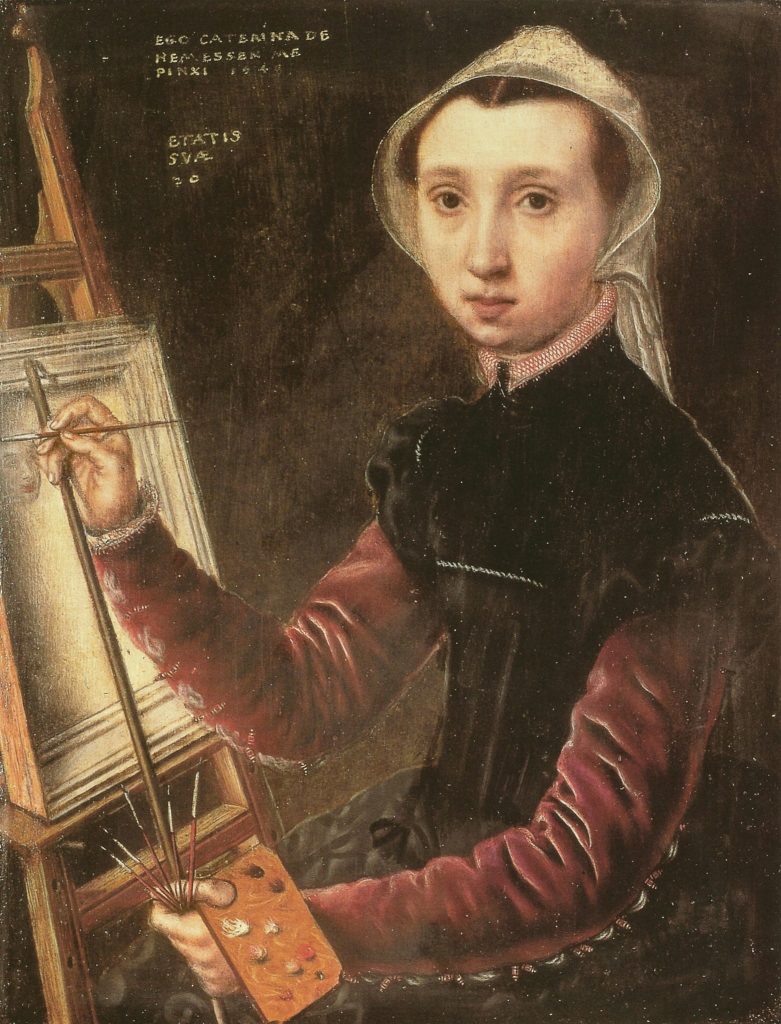
Sofonisba Anguissola (1532–1625)
Born into an aristocratic family in Cremona, Italy, the oldest of seven children, Sofonisba Anguissola was an artistic prodigy. In her lifetime, her talent was noted by Michelangelo, Vasari, and Van Dyck. Unusually for a woman, she was permitted to apprentice as a painter. As a young woman, she spent some years in the court of Philip II as a lady-in-waiting (during which service she was able to continue painting). Her surviving works, which are held in museums all over the world, include at least sixteen self-portraits, from all stages of her life—from teenager to old woman. According to the Museum of Fine Arts, Boston website, she “executed more self-portraits than any other artist in the period between Dürer and Rembrandt.”

Read about Cecilia Gamberini’s book on the artist, co-published by Lund Humphries (UK/ROW) and Getty Publications (North America).
Lavinia Fontana (1552–1614)
A Mannerist painter from Bologna, Italy, Fontana lays claim to a number of “firsts.” She is credited with being the first professional female artist. She was the first woman artist to paint female nudes, and possibly the first female to use live nude female models. She was the primary breadwinner for herself, her husband (also an artist) and their eleven children. She painted portraits, often of women, and also religious and mythological scenes. Fontana was elected into the Accademia di San Luca in Rome, where she and her family had moved at the invitation of Pope Clement VIII. She received numerous honors in her lifetime. As just one example, in 1611 sculptor and architect Felice Antonio Casoni cast a bronze portrait medallion of this artist! Read more about Fontana in Liz Lev’s Art Herstory guest post.
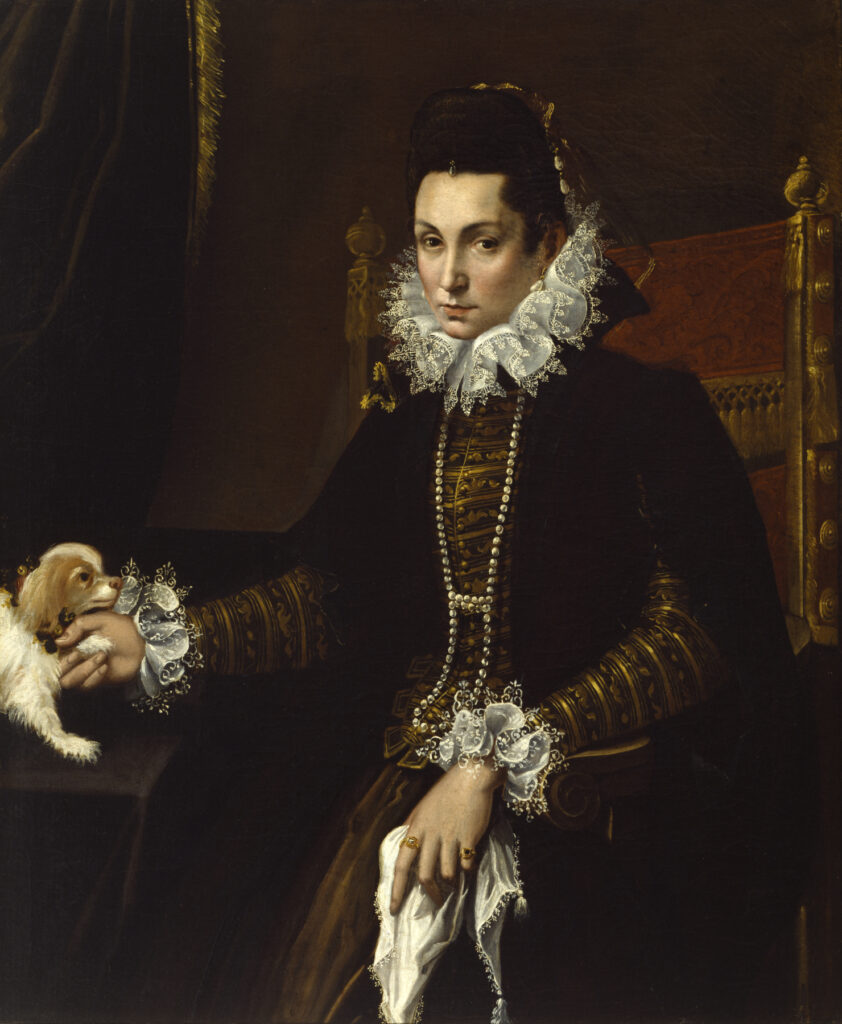
by Lavinia Fontana. The Walters Art Museum. This image is reproduced on an Art Herstory note card.
Read here about the 2019–20 Prado exhibition of works by Sofonisba Anguissola and Lavinia Fontana, “‘A Tale of Two Women Painters.”
Artemisia Gentileschi (1593–after 1654)
Like her painter father Orazio Gentileschi, Artemisia Gentileschi was one of the Caravaggisti, followers of Caravaggio. She was born in Rome, where she was trained. Over the course of her career, she also worked in (at least) Florence, Naples, Venice and England. She attracted an international clientele, including members of the Medici house, and Charles I of England. Early in her career, she survived not only the trauma of abuse at the hands of a teacher, but also the trauma of the subsequent public trial. She specialized in painting women as allegory, and pictures of strong and suffering women from myths and the Bible.

The Metropolitan Museum of Art. This image is reproduced on an Art Herstory note card.
Read here about the exhibition “By Her Hand: Artemisia Gentileschi and Women Artists in Italy, 1500–1800,” which The Wadsworth Atheneum presented in Fall 2021. From February to May 2022, the show was hosted by the Detroit Institute of Arts.
Read about Sheila Barker’s book on the artist, co-published by Lund Humphries (UK/ROW) and Getty Publications (North America).
Giovanna Garzoni (1600–1670)
Today, Garzoni is best known for her delicate watercolor paintings of plants, vegetables, and animals. But she also painted religious, mythological, and allegorical subjects, as well as portraits. She is thought to have been born in Ascoli Piceno, Italy. If she married, the marriage was short-lived and ended in annulment. She is not known to have had children. She traveled and worked all over present-day Italy (including Venice, Naples, Rome, Turin and Florence) and in Paris. She left her estate to the Church of Santa Martina, the church of the Accademia di San Luca, in the understanding that she would be buried in that church.
Read here about the June 2020 Uffizi exhibition of Garzoni’s work, “‘The Greatness of the Universe’ in the art of Giovanna Garzoni.”
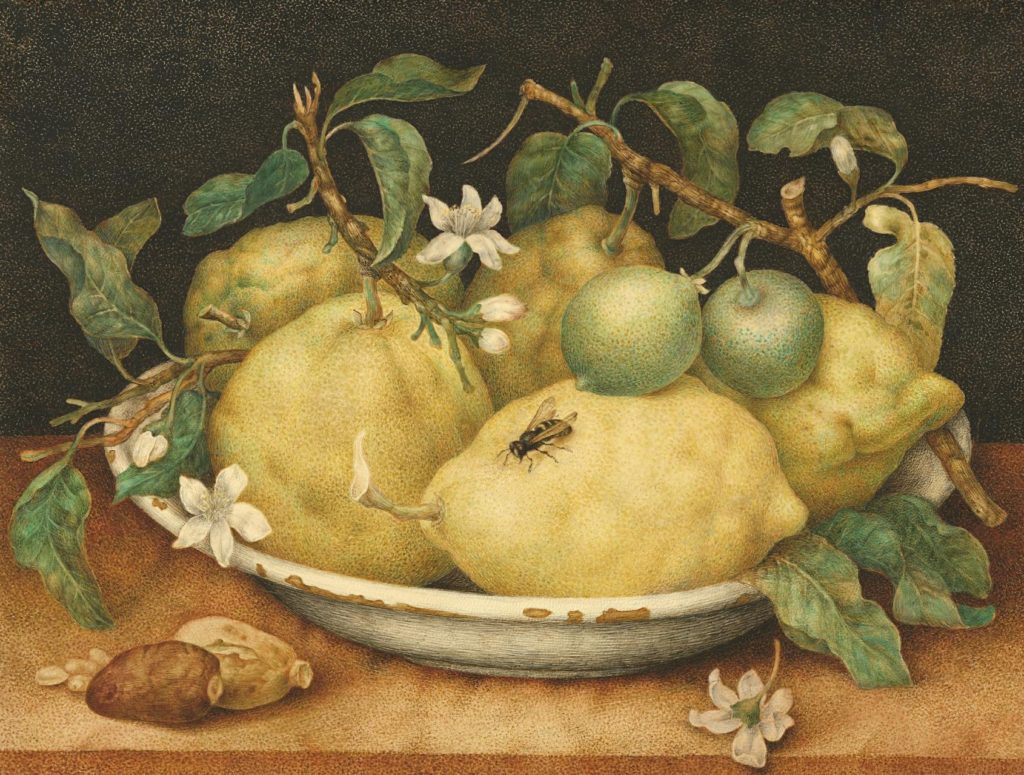
Judith Leyster (1609–1660)
Leyster, one of the first women to be admitted to the Saint Luke’s Guild of Haarlem, was a Dutch Golden Age painter of still lifes, portraits, and genre scenes. For almost 200 years after her death, experts attributed her works either to Frans Hals or to her husband, artist Jan Miense Molenaer. Many were re-attributed to her upon the discovery of her signature, a distinctive monogram of her initials which incorporates a shooting star—a play on words with her name, since Leyster means “lode star” in Dutch. Of her surviving works, she painted most in her young adulthood, before she married. But a self-portrait she painted later in life has recently come to light.
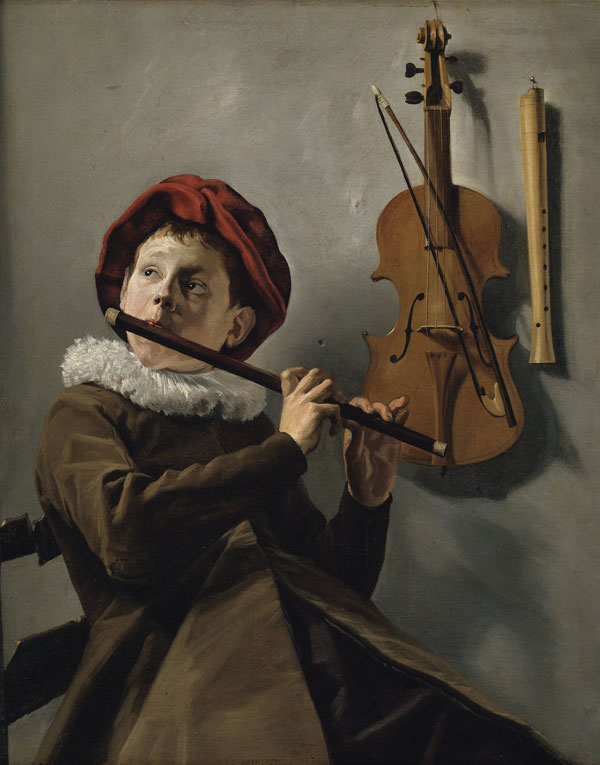
Read here about Frima Fox Hofrichter’s book on the artist, forthcoming from Lund Humphries.
Louise Moillon (1610–1696)
Born into a family of artists—her father and her stepfather were painters and art dealers, and her brother was a painter—Louise Moillon specialized in still life painting, especially of fruits and vegetables. Her patrons included members of the French nobility, as well as Charles I of England. Most of the forty or so works attributed to her today are from before 1640, though a few are from the 1670s.
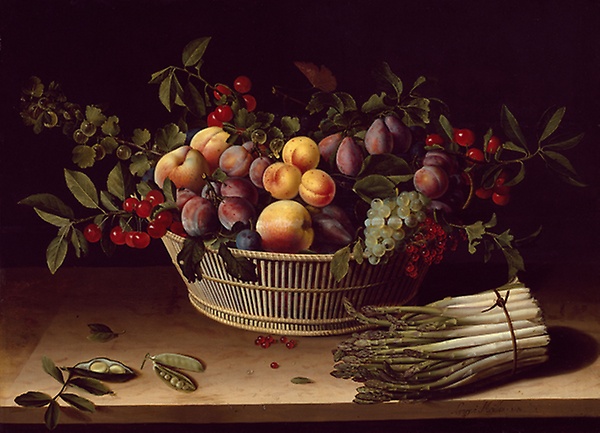
Read about Lesley Stevenson’s book on the artist, co-published by Lund Humphries (UK/ROW) and Getty Publications (North America).
Mary Beale (c. 1633–1699)
Mary Beale, née Cradock, was one of the first professional female artists in England. She supported her family with her commissions and as an art teacher. Primarily a portrait artist, Beale painted many of the courtiers of Charles II. Her husband Charles acted as her business partner. His detailed notebooks provide a unique record of his wife’s daily activities, as well as of her business practices and expenses. Beale herself is author of Observations, an unpublished piece of instructional writing on painting.

The Art Gallery of South Australia.
Read here about Helen Draper’s book on the artist, forthcoming from Lund Humphries.
Elisabetta Sirani (1638–1665)
By the time of her death at the age of only 27, Sirani was one of the most famous painters in Bologna. A former maid servant was tried, but acquitted, for having poisoning the artist. Historians now speculate that Sirani died of peritonitis, in the wake of a ruptured peptic ulcer. Her portraits, mythological subjects, and especially her images of the Holy Family and the Virgin and Child, gained her international fame. In addition to her artistic achievements, she founded an academy for women painters in Bologna. Read more about this artist in Adelina Modesti’s Art Herstory guest post.

Read about Adelina Modesti’s’s book on the artist, co-published by Lund Humphries (UK/ROW) and Getty Publications (North America).
Luisa Ignacia Roldán (1652–1706)
“La Roldana” is the first woman sculptor documented in Spain. She worked both in England and Madrid, serving Charles II and Philip V as court sculptor. At the end of her life, she was admitted to the Accademia di San Luca. She carved wooden religious sculptures for churches, which other family members then painted. She also created small polychrome terracotta works popular with the petty bourgeoisie. Today, many of her works are housed at churches across Spain.

The J. Paul Getty Museum.
Read about Catherine Hall-van den Elsen’s book on the artist, co-published by Lund Humphries (UK/ROW) and Getty Publications in (North America).
Rachel Ruysch (1664–1750)
Born in the Hague, Rachel Ruysch conducted much of her artistic work in Amsterdam. Her father, Frederik Ruysch, was a professor of anatomy and botany. His daughter used his collections to practice her drawing skills. As a young woman, she was apprenticed to the flower painter Willem van Aelst (whose studio looked over that of another Dutch woman flower painter, Maria van Oosterwijck). Ruysch married portrait painter Juriaen Pool, with whom she had ten or eleven children. After her marriage, she continued to paint, producing commissions for an international circle of patrons. Visit this link to hear Nina Cahill of London’s National Gallery talk about Ruysch’s artistic career.
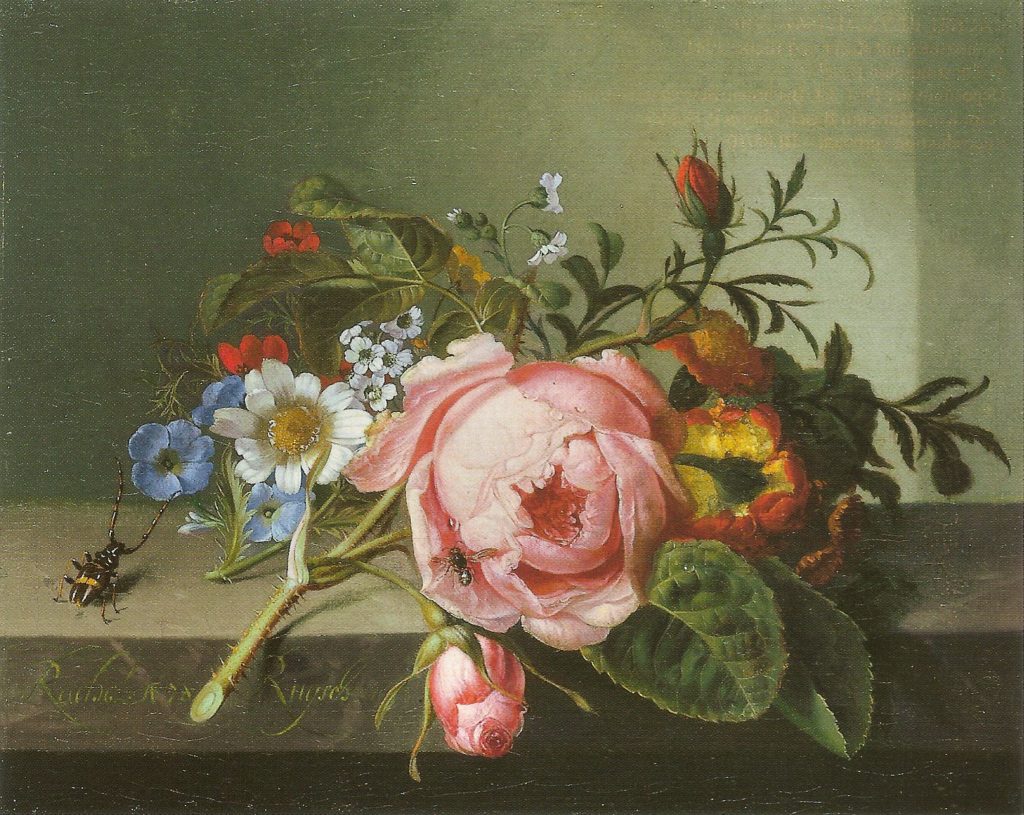
For each of the artists described above, there are multiple paintings (or in the case of Roldán, sculptures) still in existence. In some cases, visitors can find artworks by female Old Masters on display in museums. In other cases, the paintings are held in private collections, but often they can be viewed online. Look up these female Old Masters to learn more about their lives and works!
Read here about Marianne Berardi’s book on the artist, forthcoming from Lund Humphries.
More Art Herstory blog posts:
Another Dozen Great Women Artists from Long Ago
Two of a Kind: Giovanna Garzoni and Artemisia Gentileschi (Guest post by Dr. Mary D. Garrard)
Do We Have Any Great Women Artists Yet? (Guest post by Dr. Sheila ffolliott)
The Politics of Exhibiting Female Old Masters (Guest post by Dr. Sheila Barker)
Angelica Kauffman and Mary Moser: Founding Women Artists of the Royal Academy
Gesina ter Borch: Artist, not Amateur (Guest post by Dr. Nicole E. Cook)
The Protofeminist Insects of Giovanna Garzoni and Maria Sibylla Merian (Guest post by Prof. Emma Steinkraus)
The Priceless Legacy of Artemisia Gentileschi: A Curator’s Perspective (Guest post by Dr. Judith W. Mann)
‘Bright Souls’: A London Exhibition Celebrating Mary Beale, Joan Carlile, and Anne Killigrew (Guest post by Dr. Laura Gowing)
New Adventures in Teaching Art Herstory (Guest post by Dr. Julia Dabbs)
Renaissance Women Painting Themselves (Guest post by Dr. Katherine A. McIver)
Rachel Ruysch (1664–1750): A Birthday Post
Why Do Old Mistresses Matter Today? (Guest post by Dr. Merry Wiesner-Hanks)





What about Sophia Brahe? She was an astronomer with her brother, Tycho Brahe.
Yes, but this site concerns women artists, not women astronomers.